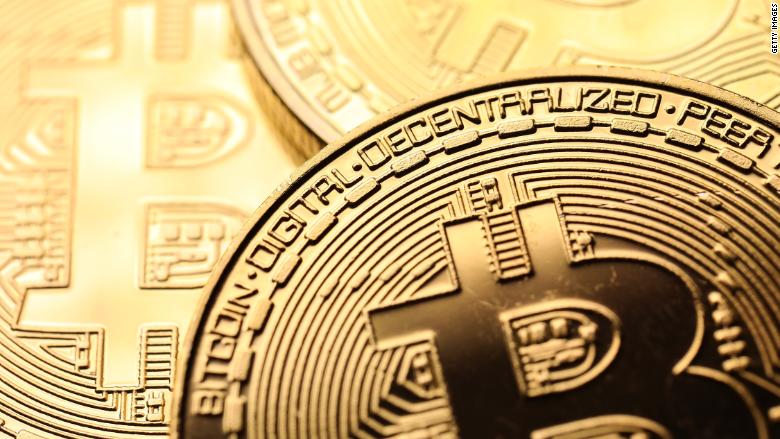Insufficient Bitcoins is the reason for its price increase

The cryptocurrency stands out from the rest due to its extremely limited supply, which is unlike any other commodity.
How come bitcoin hit a new high this week? Proponents of the most popular cryptocurrency in the world argue that this is the result of good ol’ fashioned supply and demand.
The price of bitcoin is highly responsive to changes in demand, just like the price of any commodity. Additionally, the introduction of “spot” bitcoin ETFs in the United States, which hold units of the digital currency immediately, caused demand for bitcoin to skyrocket in January. Ever since, billions of dollars have been invested in these exchange-traded funds. The funds were driven to purchase bitcoin in order to keep up with demand, driving up its price.
Bitcoin stands out from the rest of the commodities market due to its extremely limited supply, which in turn causes price surges.
There is a strict cap of 21 million bitcoins set by the underlying computer code. The majority, over 90%, have already been manufactured. Computers that are good with numbers “mine” new currencies by running algorithms. Nevertheless, their daily output is limited to 900 bitcoins, and following a periodic event known as the halving, this pace is anticipated to decrease next month. At some point around the year 2140, when all of the bitcoins have been mined, the supply will stop increasing.
Among the world’s scarcest assets, Bitcoin is getting scarcer by the day, according to Alex Thorn, head of research at Galaxy Digital.
The continuation of bitcoin’s climb is not guaranteed. Holdings may be tempted to sell at current prices in order to secure gains. Devastating crashes have followed each of Bitcoin’s prior bull markets: In the year following its previous high in November 2021, bitcoin’s price fell by approximately 70%.
Bitcoin is still viewed by skeptics, particularly government officials and Wall Street executives who have chosen to remain on the sidelines during the boom, as an asset with no real worth outside its speculation.
At 4 p.m. ET on Wednesday, Bitcoin was trading at $67,139.33, down from the previous day’s record high of $69,208.79 but still 58% higher than it was at the beginning of the year.
According to economic theory, bitcoin’s supply is extremely inelastic, meaning it doesn’t react to changes in price. Commodities with this characteristic often experience sudden and extreme price fluctuations. For example, natural gas producers cannot immediately increase gas production to capitalize on high pricing.
Keep in mind that drillers are motivated to find new supplies of natural gas by the long-term, high costs of the fuel. Likewise, when gold prices are high for long periods, miners can afford to embark on expensive new mining projects, seeking out the precious metal in increasingly exotic locations.
Bitcoin operates differently. The code that makes up Bitcoin dictates the rules that miners must follow in order to bring new coins into circulation; every so often, these rules are slashed in half. Because cryptocurrency speculators expect supply to be tighter, the price of bitcoin has historically risen in the days leading up to such halvings. It was Satoshi Nakamoto, the enigmatic creator of Bitcoin, who proposed the idea of a fixed maximum supply to prevent inflation in his writings.
“There is fundamentally no ability to bring additional supply to the market,” stated Steven Lubka, head of private client services at investment firm Swan Bitcoin.
Since its inception on January 11, the new exchange-traded funds (ETFs) have been devouring bitcoins, making the cryptocurrency vulnerable to spikes in demand. That same day, the Grayscale Bitcoin Trust transformed into an ETF, and nine new spot bitcoin ETFs went live for trading. Since then, the nine new funds have surpassed Grayscale in terms of net inflows, and the ETFs have received close to $8 billion.
According to estimates from investment research firm ByteTree, as of Tuesday, 5% of the world’s total supply of bitcoin was held by ETFs or other investment funds globally. This is an increase from 4.4% on Jan. 11, when the new U.S. ETFs began trading.
To satisfy investor demand, exchange-traded funds (ETFs) often use proprietary trading firms like Jane Street Capital in New York or Cumberland, a division of Chicago-based trading behemoth DRW Holdings. To meet the requests of the funds, these businesses’ crypto trading desks hunt the digital currency markets for large quantities of bitcoin.
According to several experts, getting bitcoin from large holders is getting harder by the day. According to public blockchain data, a significant portion of the 19.6 million bitcoins in circulation are held in digital wallets that do not frequently transfer these coins. This could be due to the fact that their owners are long-term bitcoin holders who are unwilling to sell, or even worse, that they have forgotten their passwords and are unable to access their coins.
According to a research paper published last week by Manuel Villegas, an analyst at the Swiss private bank Julius Baer, around 80% of the bitcoin supply has remained unchanged over the last six months. In addition to the funds flowing into exchange-traded funds, there is data indicating that exchanges have limited bitcoin inventories, which “could set the stage for an intensified supply squeeze,” as Villegas put it.
Some argue that the abundance of sellers eager to cash in on the rise is to blame for bitcoin’s lack of movement this week after temporarily surpassing its 2021 peak.
According to Rob Strebel, head of relationship management at DRW, Cumberland had no trouble sourcing enough bitcoin to satisfy the demand for the coins from ETFs over the previous weeks of significant inflows. Big crypto investors who pounced on bitcoin’s price drop made up a large portion of the firm’s bitcoin holdings, he added.
According to Strebel, it’s a great time to sell when you witness a market going parabolic, like bitcoin has done. People are removing some bets because they are thinking back to the last bull market in 2021.







